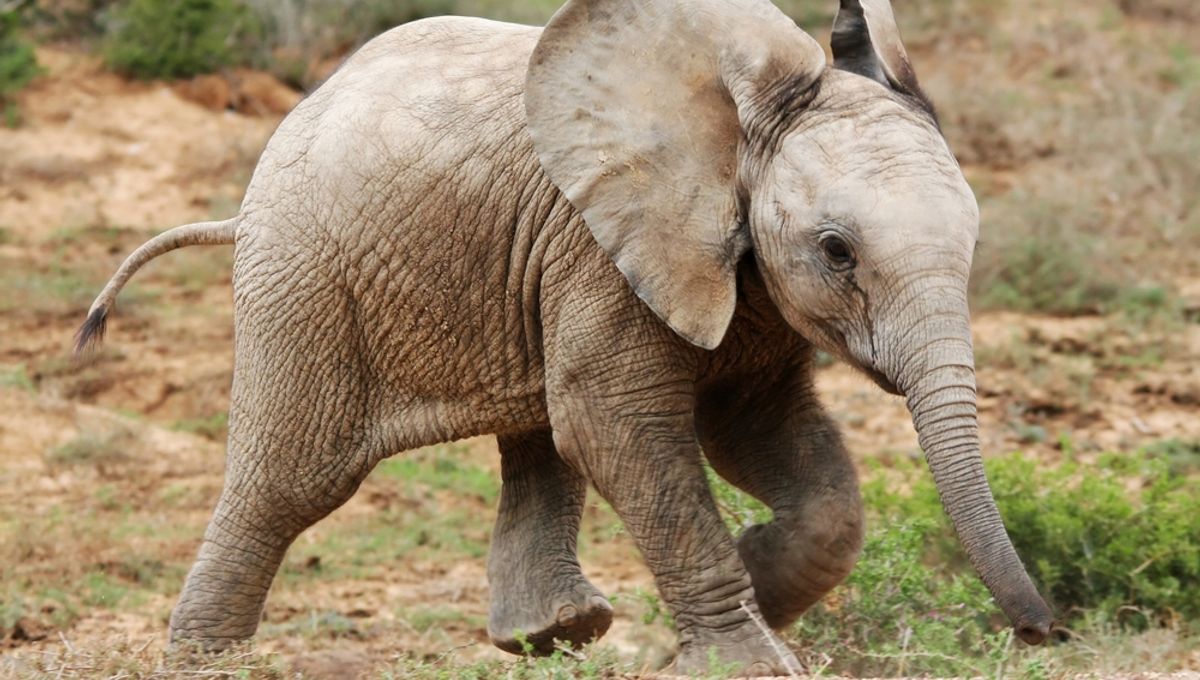
Motty remains the only confirmed hybrid between an African elephant (Loxodonta africana) and an Asian elephant (Elephas maximus). Although the calf tragically died just days after birth, his unique descent earned him the rare distinction of being named the “world’s rarest elephant” by Guinness World Records.
Motty was born on July 11, 1978, at Chester Zoo in the UK and named after its founder, George Mottershead. As proven by tissue samples taken from the tiny male calf, this individual was the result of interbreeding between Jumbolino, a male bull African elephant, and Sheba, a female Asian elephant.
When the matriarch Sheba fell first pregnant, there wasn’t much doubt over the paternity of the individual; Jumbolino was said to be the only male elephant in the shared enclosure. However, there were still significant doubts about whether it would be possible for the two different species to produce viable offspring.
It would be impossible for these two species to mate in the wild given the vast geographical distance that separates their natural ranges on two different continents. Furthermore, these two animals are not just different species; they are different genera, meaning they are relatively distant from each other on the genetic tree too.
African elephants and Asian elephants bear some distinct physical differences. The former species is larger, growing up to 3 to 4 meters (9.8 to 13.1 feet) from shoulder to toe, while the latter will only grow 2 to 3.5 meters (6.5 to 11.4 feet) tall. African elephants also have significantly larger ears, perfectly evolved for allowing heat to radiate away from the body in the savannah, and tend to have more wrinkly skin.
Just as you’d expect with a hybrid of the two, Motty had features of both his mother and father. His head shape and larger ears were clearly those of an African elephant, but he also had five toenails on the front feet and four on the hind, which is a characteristic of Asian elephants.
Unfortunately, Motty had a tough start in life. Born six weeks premature, he was extremely underweight and required intensive veterinarian care from the get-go. Just 10 days after he was born, he succumbed to necrotizing enterocolitis, a serious gastrointestinal problem in newborn animals. He died on July 21, 1978. A necropsy later showed that he was suffering from a severe E. coli infection in both his colon and the umbilical cord.
Upon his death, the body of this unique individual was reportedly preserved by a private collection and it is said to be kept at the Natural History Museum in London.
Motty is a true individual, the likes of which have never been seen since. However, there are plenty of other examples of interspecies romping and hybridization elsewhere in the animal kingdom. There is the sought-after beefalo and the uber-cute dog-fox combo, not to mention the surprising number of wholphins that swim the world’s oceans.
An earlier version of this story was published in 2023.
Source Link: "World’s Rarest Elephant”: Meet Motty, The Only Known Elephant Hybrid